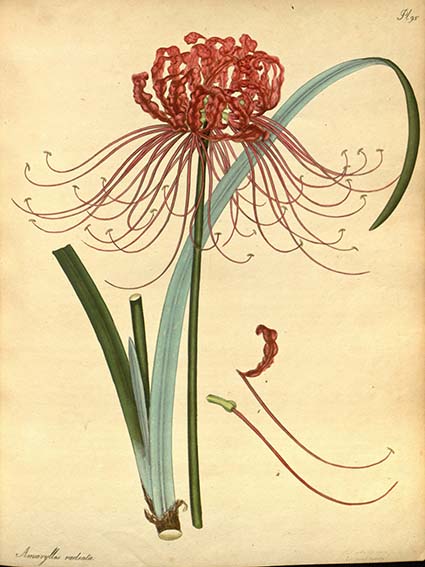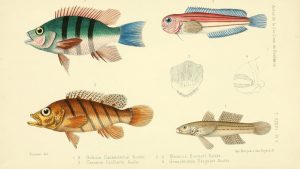
500 Years of Natural History in Paintings
Biodiversity Heritage Library, an international association of various museums, has opened one of the largest illustrated compilations in the world for free, publishing more than 150 thousand scientific artworks to the public.
BHL started out in 2006, and now possesses a large number of museums including ones focusing on natural history, botany and scientific research. Most of these museums strive to gather information on collective biodiversity in a single, easily accessible place in or to serve for a better understanding of the rapidly changing ecosystems and global crises such as climate change. The library provides open access to approximately 57 million pages, compiled as hundreds of thousands of volumes of resources dating back to the 15th-21st centuries. It also seeks to provide copyrighted materials under the “creative commons” license.

The scientific accuracy of some of the illustrations is debatable, as they are very old. However, it is still a unique source of visual materials, covering a multitude of subjects, creatures, and objects -from fruit gardens in Belgium to paleontological bone collections. It definitely provides insight to an extremely wide range of creatures and their relationships with each other on the planet, through the eyes of scientists who lived in ages where they never had the opportunity to experience even the most basic photographic technologies.
Despite all the technologies, databases and ongoing scientific studies at our day and age, we still do not know the exact number of species living on Earth. Estimates ranging from approximately 5.3 million to 1 billion pretty much reveal the level of uncertainty on the issue. It is impossible to count the creatures individually as many live under conditions that are beyond human reach (such as the seabed), and some live “in” other creatures. Some, on the other hand, are very small and invisible to the naked eye, so we are not even aware of their existence.

Over time, scientists engaged in various attempts to figure out the number of species living in the world; and by using different methods, they all suggested different figures. The majority of these cannot go beyond being general predictions made by looking at certain patterns of biodiversity, and they usually disregard microorganisms like the bacteria -because the only way to correctly identify these species is by DNA sequencing.
Many people in the history of science, such as Carl von Linné, the founder of modern taxonomy, dedicated themselves to documenting and classifying life on Earth. Although approximately 1,250,000 species have been identified and recorded in databases over the past 250 years, the total number of species is still unknown. Some estimates merely remind us of our tiny place in a huge universe, suggesting numbers that exceed the total number of stars in the Milky Way.
REFERENCES
- 1. https://www.atlasobscura.com/articles/see-an-online-librarys-artful-illustrations-of-the-natural-world?utm_source=Atlas+Obscura+Daily+Newsletter&utm_campaign=f5bcccd5ec-EMAIL_CAMPAIGN_2020_02_21&utm_medium=email&utm_term=0_f36db9c480-f5bcccd5ec-69884689&mc_cid=f5bcccd5ec&mc_eid=8a03e582e7
- 2. https://www.biodiversitylibrary.org/
- 3. https://www.sciencedaily.com/releases/2011/08/110823180459.htm
